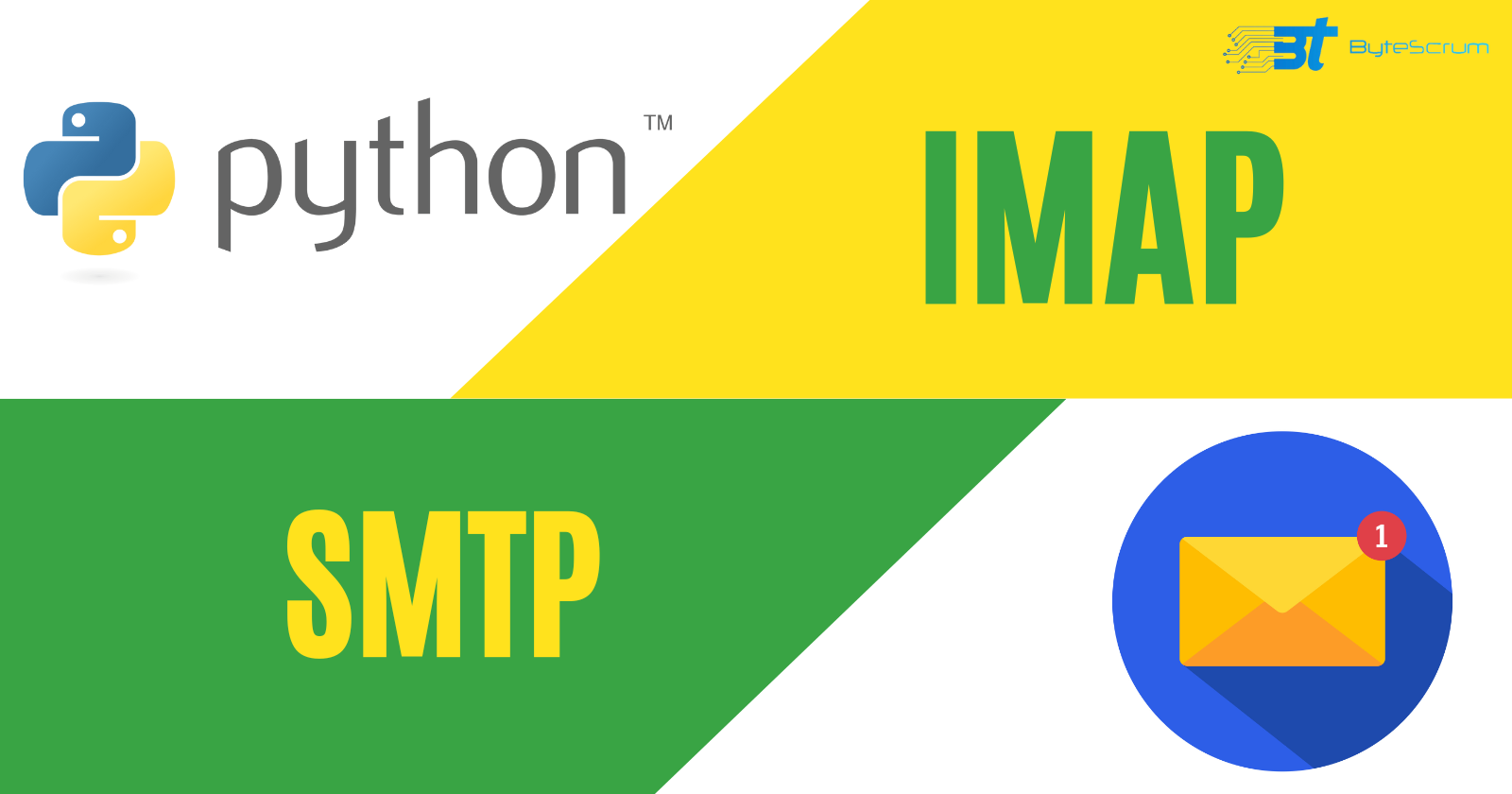How to Get and Send Email in Python Using IMAP and SMTP
 ByteScrum Technologies
ByteScrum Technologies
In this tutorial, we will explore how to use Python to interact with email servers using the IMAP (Internet Message Access Protocol) and SMTP (Simple Mail Transfer Protocol) protocols. We'll cover how to retrieve emails from an inbox and send emails using a SMTP server. This tutorial assumes you have a basic understanding of Python and are familiar with setting up and accessing email accounts.
Getting Started
To begin, ensure you have Python installed on your machine. You will also need to enable IMAP and SMTP access in your email account settings. Note that you should be cautious when handling email credentials and consider using environment variables or configuration files to store them securely.
Installing Required Libraries
We will use two libraries in this tutorial: imaplib for IMAP operations and smtplib for SMTP operations. You can install these libraries using pip:
pip install imaplib smtplib
Getting Emails with IMAP
First, let's look at how to connect to an IMAP server and retrieve emails from an inbox:
import imaplib
# Connect to the IMAP server
mail = imaplib.IMAP4_SSL('imap.example.com')
# Login to the server
mail.login('your_email@example.com', 'your_password')
# Select the mailbox (inbox in this case)
mail.select('inbox')
# Search for emails
status, data = mail.search(None, 'ALL')
# Get the list of email IDs
email_ids = data[0].split()
# Loop through the email IDs and fetch the email data
for email_id in email_ids:
status, data = mail.fetch(email_id, '(RFC822)')
raw_email = data[0][1]
print(raw_email)
In this code, replace 'imap.example.com', 'your_email@example.com', and 'your_password' with your IMAP server address, email address, and password, respectively. This code connects to the IMAP server, logs in, selects the inbox, searches for all emails, and then fetches and prints the raw email data.
Sending Emails with SMTP
Next, let's look at how to send an email using SMTP:
import smtplib
from email.mime.text import MIMEText
from email.mime.multipart import MIMEMultipart
# Connect to the SMTP server
smtp_server = 'smtp.example.com'
port = 587
server = smtplib.SMTP(smtp_server, port)
server.starttls()
# Login to the server
server.login('your_email@example.com', 'your_password')
# Create the email message
sender_email = 'your_email@example.com'
receiver_email = 'recipient@example.com'
message = MIMEMultipart()
message['From'] = sender_email
message['To'] = receiver_email
message['Subject'] = 'Test Email'
body = 'This is a test email sent from Python.'
message.attach(MIMEText(body, 'plain'))
# Send the email
server.sendmail(sender_email, receiver_email, message.as_string())
# Close the connection to the SMTP server
server.quit()
Replace 'smtp.example.com', 'your_email@example.com', and 'your_password' with your SMTP server address, email address, and password, respectively. This code connects to the SMTP server, logs in, creates an email message, and sends it to the specified recipient.
Conclusion
Subscribe to my newsletter
Read articles from ByteScrum Technologies directly inside your inbox. Subscribe to the newsletter, and don't miss out.
Written by

ByteScrum Technologies
ByteScrum Technologies
Our company comprises seasoned professionals, each an expert in their field. Customer satisfaction is our top priority, exceeding clients' needs. We ensure competitive pricing and quality in web and mobile development without compromise.